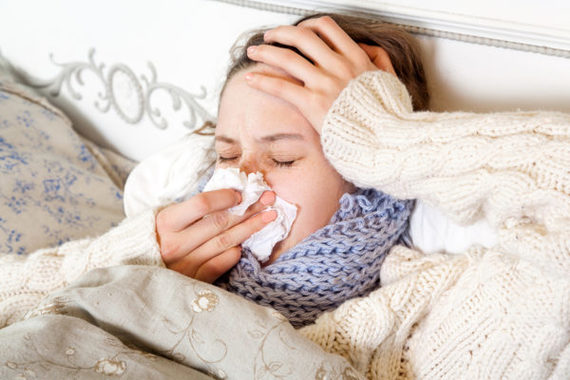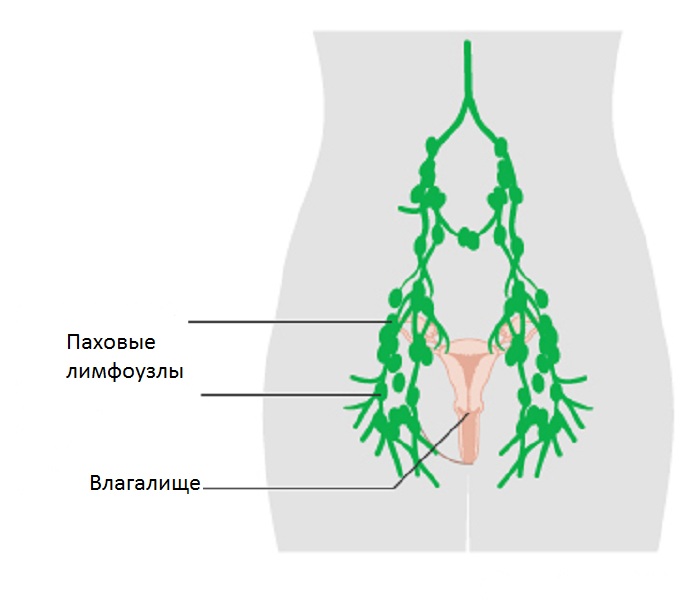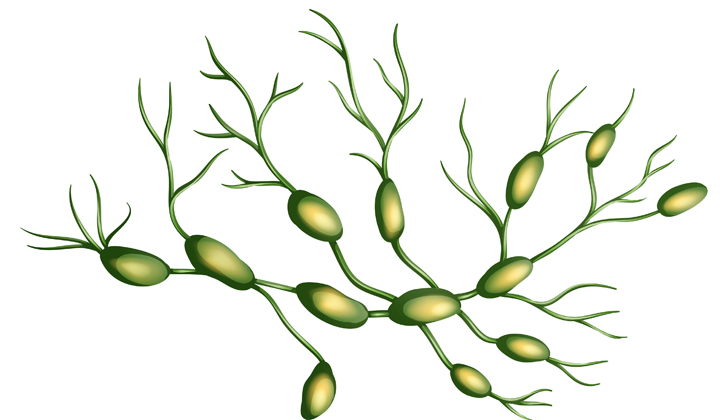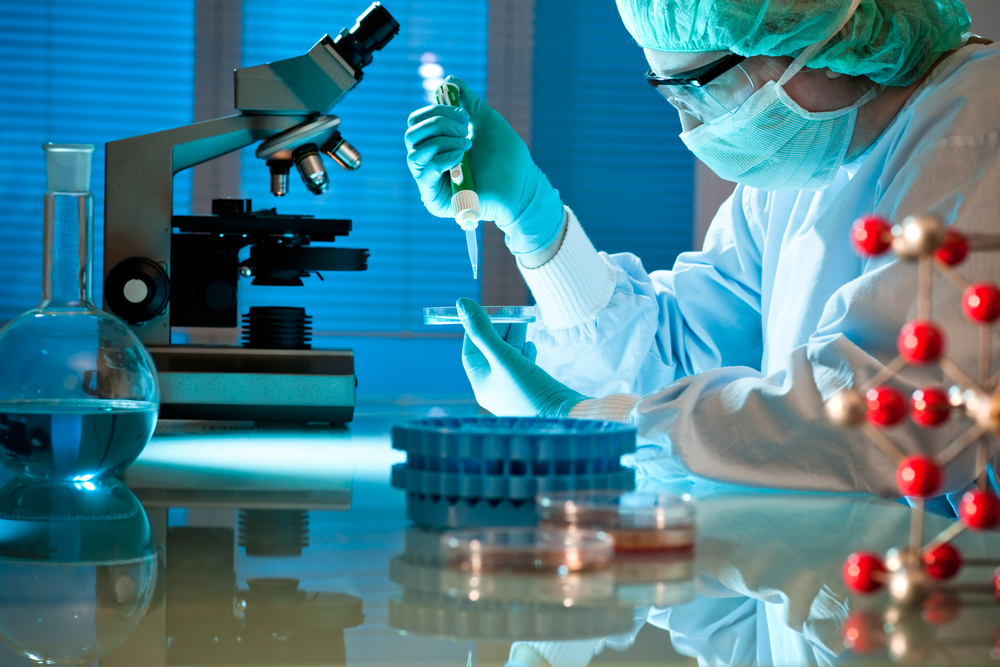Enlarged lymph nodes in women can signal serious diseases, usually they appear against the background of inflammation in the body. Lymph nodes are a kind of signal that something has gone wrong in the body.
The cause of inflammation of the lymph nodes in the groin in women can be both a banal cut and an infection. In any case, a woman should consult a doctor. Based on the symptoms and medical history, the doctor prescribes the necessary tests and studies, and then selects the treatment.
You do not need to panic, because the lymph nodes can increase with a common cold, but you should not hesitate to contact a medical institution.

What is it?
The lymph node is a kind of body filter that cleanses lymph fluid from various viruses and toxins, as well as cellular decay products. Bacteria can enter the lymph from the peripheral tissues, and in the lymph nodes they are disinfected by immune cells. In addition, immune cells mature in the lymph nodes: T-killers and T-helpers. They protect the body from viruses and tumors.
Lymph nodes in the groin cleanse the pelvic fluid, as well as the lower extremities. In a healthy state, the size of the node is in the range between 1.5-2 cm. If a virus or bacterium enters the body, the lymph node may increase.

Location of inguinal lymph nodes
Where are the lymph nodes located? The anatomy of the human structure involves the whole lymphatic system of the body. There are not only inguinal lymph nodes, each department has its own “infection filters”. It is easy to understand where the lymph nodes are located in the groin of women, because they are easily probed. The location is the crotch in the crease between the legs and the pelvic area. They are also palpable in the femoral triangle.
The location scheme where the lymph nodes are located suggests three groups:
- in the femoral region and lower abdomen is the upper level of lymph nodes;
- Near the anus hole is the middle level;
- on the foot is the lower level.
Lymph nodes that are localized between the thigh and inguinal zone are palpated without zeal. But not all lymph nodes of the groin can be felt - the upper and middle levels are not palpable.
Below is a diagram of the location of the lymph nodes in the groin in women.

Location of lymph nodes in men
Where are the lymph nodes in the groin in men? Inguinal lymph nodes are located at the junction of the thigh with the peritoneal part, they are adjacent to the blood arteries, spermatic cord, and inguinal canal.
Male inguinal lymph nodes are more sensitive to various diseases, they can increase with a cold or allergies, muscle injuries or sprains. Reduced immunity and stress can also trigger a sharp increase in inguinal lymph nodes in men.
In general, the scheme where the lymph nodes are located in the groin in women is not very different from the male one.
Lymphadenitis

A disease in which inflammation of the inguinal lymph nodes is diagnosed is called lymphadenitis. For proper treatment, you need to remember that there are always good reasons that activate the lymphatic and immune systems. In medical practice, it is customary to distinguish several types of lymphadenitis, depending on the location of the lymph nodes in the groin in women and the causes of origin.
There is generalized and local lymphadenitis of the inguinal nodes.
Inflammation of one or several lymph nodes is referred to as local; inflammation can be one-sided or two-sided.
With unilateral inguinal lymphadenitis, the infection enters the lymph node from the outside. With bilateral lymphadenitis, we can talk about infectious lesions of the internal organs.
Types of inguinal lymphadenitis
There are two types of lymphadenitis:
- specific;
- non-specific.
Specific lymphadenitis occurs due to serious diseases, it can be tuberculosis, pneumonia, syphilis, cancer. Nonspecific lymphadenitis is possible due to the special location of the lymph nodes in the groin in women: infection occurs (usually sexual), this causes an increase in the lymph node.
Also, lymphadenitis can be chronic or acute. In acute patients, there is a sharp deterioration in the condition with an increase in body temperature and severe pain in the inguinal zone. Chronic lymphadenitis is a much more serious pathology, characterized by a constant increase in the lymph nodes that harden, resulting in adhesions.

Causes of enlarged lymph nodes
One of the common causes of inflammation of the lymph nodes in the groin is the treatment of an infection that does not comply with medical standards, so it is important to consult a doctor and not self-medicate. Often concomitant infections can provoke an enlarged lymph node.
The causes of lymph nodes in the groin in women can be the following factors:
- Skin damage: cuts when removing hair with a razor in the bikini area, bruises of the inguinal region, cat scratches (with a slight injury, the Bartonella bacterium can cause an increase in lymph nodes), stab-cut wounds of the lower extremities, leg fractures.
- Allergy: the cause may be a previously unused means for intimate hygiene or shower gel; side effects of certain drugs (Finlepsin, Penicillin).
- Genital infections: acute thrush, vulvovaginitis, inflammation of the bartholin channels (bartholinitis).
- Purulent skin lesions of the inguinal zone or lower extremities: such diseases can be triggered by Escherichia coli or streptococcus.
- Diseases of viral etiology: acute form of influenza in a patient with a weak immune system, Epstein-Barr virus, chronic form of genital herpes, rubella, measles.
- Venereal diseases: the initial stage of syphilis, chlamydia, gonorrhea in the initial stage, ureaplasmosis of a latent form or with an asymptomatic course.
- Diseases of the female genital organs of non-inflammatory etiology: adhesions, ovarian cysts, disturbed hormonal levels.
- Urinary system diseases: chronic cystitis, urethritis, stones in the bladder (when they pass through the urethra, they affect the mucous membrane, an inflammatory reaction occurs), chronic pyelonephritis.
- The reaction of the body to surgery: non-infectious lymphadenitis can begin after operations on purulent inflammation (appendicitis in the last stage, peritonitis), and inflammation can also occur when the body rejects the implant during genital plastic surgery.
- Various infections: cytomegalovirus, tuberculosis, HIV, mononucleosis, toxoplasmosis and others.
- Pathologies of the lower extremities: trophic ulcer, arthritis of the hip joint, erysipelas, arthritis of the knee joint.
- Oncological diseases: Hodgkin’s lymphoma, lymphosarcoma, malignant neoplasm of the rectum, as well as genitals, metastases in the pelvic organs, cancer of the lymph node (by the way the cancer of the lymph node in the groin looks, it is impossible to determine the stage of the lesion).
Symptoms

The location of the lymph nodes in the groin in women makes unilateral or bilateral lymphadenitis possible. As a rule, the disease process begins with normal inflammation, which, if untreated, can lead to suppuration, the development of adenophlegmon, or a chronic enlargement of the lymph nodes.
The following symptoms are characteristic of enlarged inguinal lymph nodes:
- the diameter of the lymph node increases, with an acute disease, the lymph node can become the size of a chicken egg;
- pain in the groin: in a calm state, the lymph nodes do not hurt, however, palpation may cause acute pain, and unpleasant painful symptoms can occur when running or walking fast;
- the skin above and around the lymph node changes: visually you can notice redness of the skin, peeling and itching;
- a sharp increase in body temperature: this symptom usually occurs against a background of another disease, but is also a symptom of enlarged lymph nodes;
- weakness: when an infection joins or a purulent process occurs in the body, the patient feels general weakness;
- lack of appetite: refers to the general symptomatology of diseases that provoke an increase in lymph nodes.
In chronic lymphadenitis, the symptoms are mild or completely absent, but during periods of exacerbation, the symptoms become pronounced.
Diagnostics
For an accurate and correct diagnosis, it is important to apply as many diagnostic studies as possible so that the clinical picture is viewed most clearly and clearly. If enlarged inguinal lymph nodes are detected, a woman should consult a gynecologist or venereologist, then, based on an anamnesis and primary studies, treatment will be prescribed.
Complaints and medical history

The primary symptoms of the disease can be mild or, conversely, pronounced, it depends on the type of pathogen and the location of the lymph node in the groin of a woman, therefore it is very important to collect an anamnesis about the general lifestyle, about sex life, about injuries and injuries, about the patient’s relatives that may be carriers of dangerous diseases.
Typically, the patient complains of:
- groin pain;
- enlarged lymph nodes;
- pain when playing sports;
- heat in the inguinal zone;
- redness of the skin;
- vaginal discharge in women.
Inspection
During a visual examination of the patient, the doctor must carefully study the size of the lymph node and its mobility. Symptoms may indicate acute inflammation:
- pain in the lymph node during palpation;
- swelling of the tissues that are next to the inflamed lymph node;
- the lymph node is immobile due to the fact that it has fused with neighboring tissues;
- dense lymph node consistency;
- bright red color of the skin over the lymph node.
If the doctor discovers that in the center of the lymph node there is softening of the tissue, then this is a sign of the formation of purulent masses inside the node. With an autopsy of a purulent abscess in the groin area, a phlegmon is formed - a condensed area without clear boundaries. Through fistulous passages pus can be secreted.
With the formation of a tumor, inflammation in the lymph node is weakly expressed:
- the skin over the lymph node does not differ in color from the rest of the skin;
- the lymph node is not connected to neighboring healthy tissues;
- pain is absent;
- on palpation, the lymph node is solid.
Laboratory and instrumental studies

To make a diagnosis:
- General blood test - in the presence of inflammation in the body, the number of leukocytes in the blood is increased, ESR is accelerated.
- Urinalysis - in adults with inflammation in the urine, protein is found, and in children - ketone bodies.
- Biochemical blood test - a high protein content in blood plasma.
- A blood test for antibodies - helps in identifying the cause of inflammation.
- Microscopic examination - to identify tumor cells and the causative agent of infection, the lymph node is examined under a microscope.
- Bakposev - the material of the lymph node is examined for nutrient media and determine the sensitivity of the pathogen to a specific type of antibiotic.
- X-ray examination - identifies possible changes in tuberculosis, and also helps to establish the presence of calcifications in the lymph node.
- Ultrasound examination - look at the lesion of neighboring tissues, the size of the lymph node and its contents.
- Biopsy - the lymph node is punctured and material is taken for further examination.
Treatment
Different doctors are involved in the treatment of pathology, it depends on the location of the lymph node in the groin of a woman. As a rule, treatment can be prescribed by a gynecologist, surgeon or infectious disease specialist. The most commonly used conservative treatment. There can be various causes of inflammation of the lymph nodes in the groin. Treatment is prescribed purely individually.
Drug therapy consists in the use of drugs and antiseptic agents for treatment. Women are prescribed a course of hormonal antibiotics, the most prescribed drug is Penicillin. The doctor determines the dosage and duration of admission individually for each patient. Ointments for external use are also prescribed - Levomekol, salicylic and tetracycline. Ointments give a positive effect only in complex treatment with antibiotics.
In addition to medicines, physiotherapy is prescribed: electrophoresis and UHF. Physiotherapeutic procedures have an anti-inflammatory effect, however, with purulent formations they are not used, since tissue is heated and purulent masses are released.
Surgical intervention is carried out in the most advanced cases, if medications and physiotherapy were ineffective. On an outpatient basis, a lymph node with a purulent formation is opened, drainage is established - a silicone tube, which contributes to the outflow of purulent masses.
Forecast
The speed of treatment is directly dependent on the stage of the disease, as well as on the nature of the course. Often you have to first treat the cause of the inflamed lymph nodes and only after that - the inflammation in the groin itself. The chronic form requires lengthy medical manipulations, sometimes with a complex form, treatment can continue for several months.
Inflamed lymph nodes respond well to treatment, for modern medicine such a pathology is not a big problem.